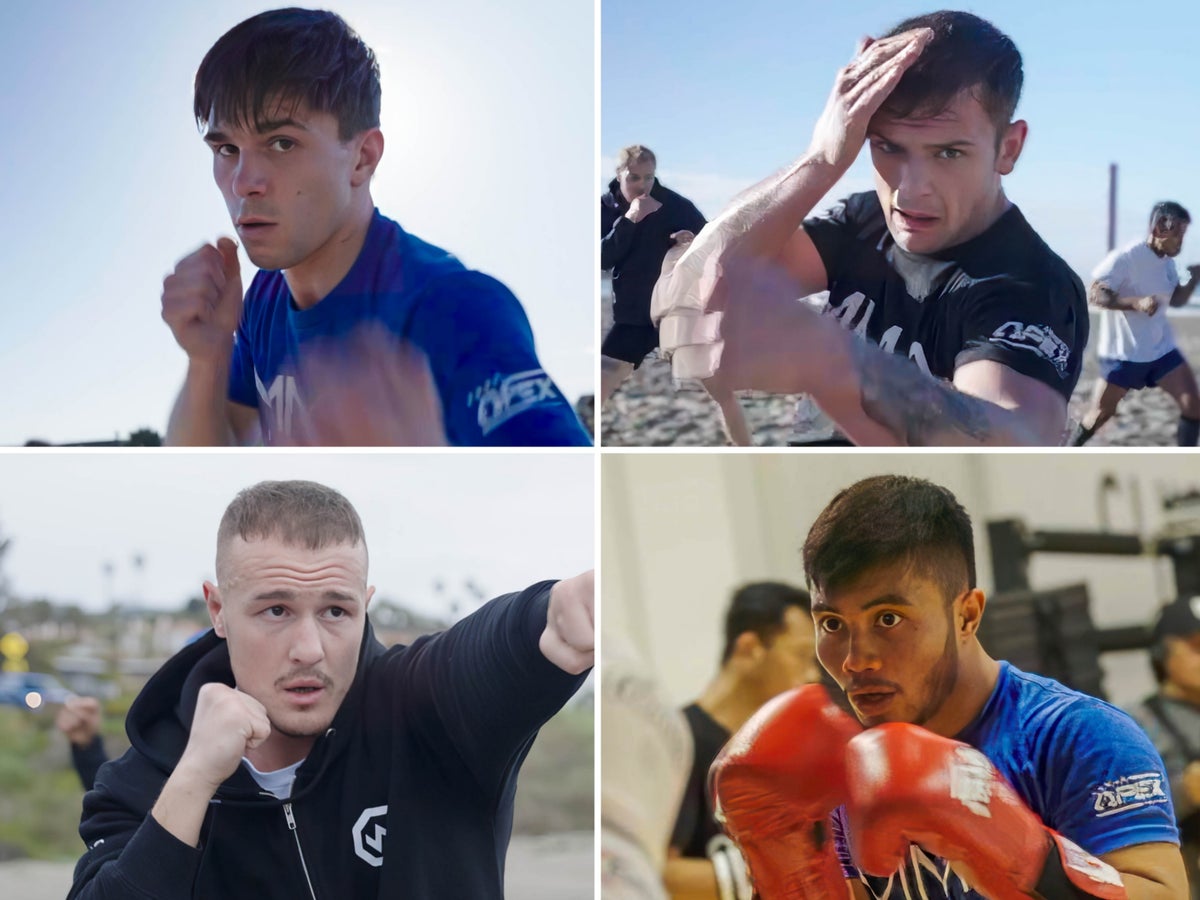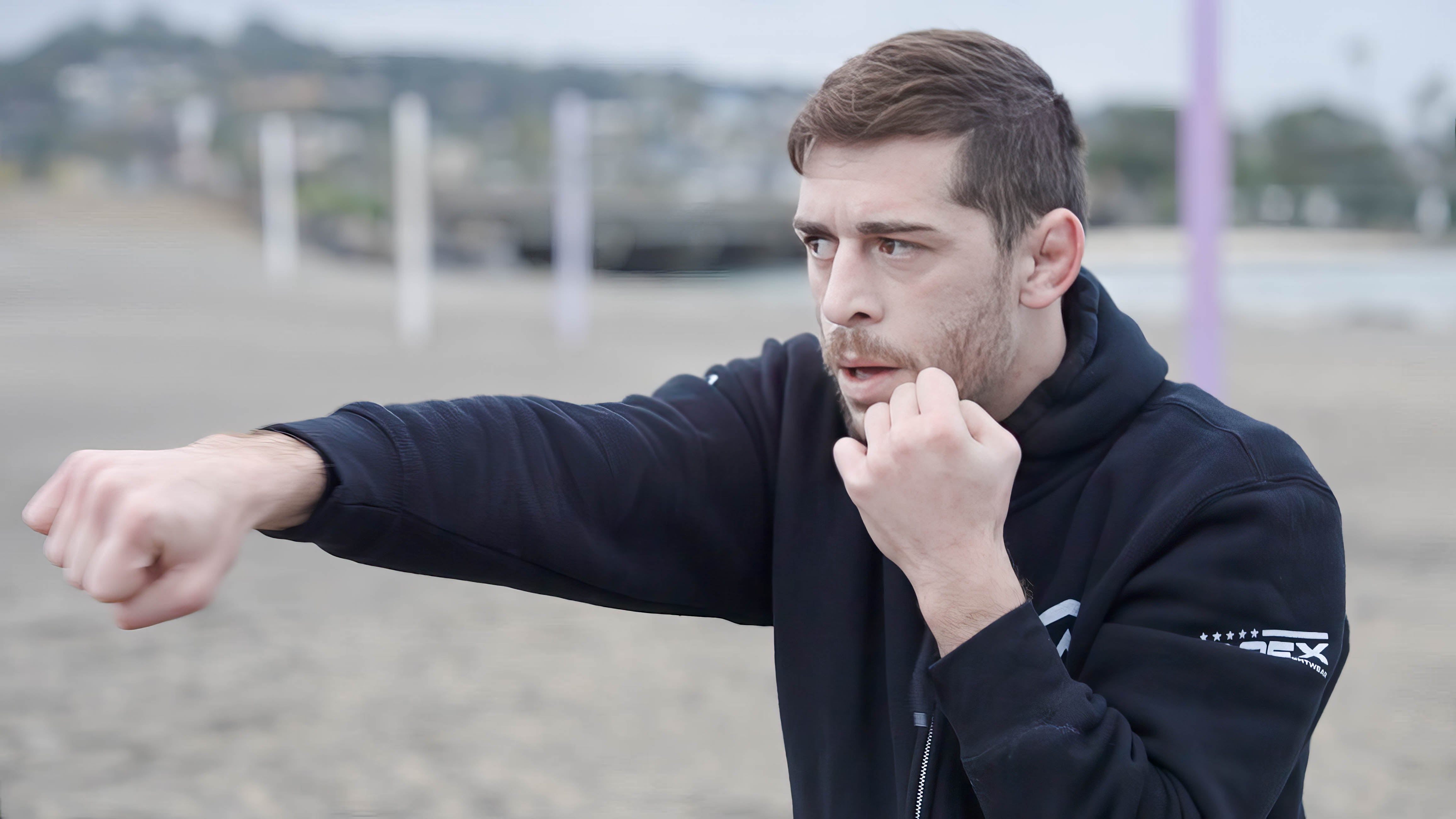
On a spring morning in Solana Beach, 22 miles north of downtown San Diego, 20 fighters wake in a Holiday Inn. They make their way through the hotel, past the reception, and out onto the street, where their coach Marc Fiore awaits with a message. This morning, there will be no training on the sand, under the sun; with rare rain pouring down, the fighters’ training session instead starts under the concrete shelter of a parking garage.
When the aspiring mixed martial artists gratefully accepted an invitation from Graham Boylan, CEO of Europe’s leading promotion Cage Warriors, and entertainment company Mola to take part in a life-changing fight programme in California, there would have been more daydreams of palm trees than parking lots. Then again, every fighter here dreams of being locked in a cage to compete, so the confines of a greyscale, underground, makeshift training space will suffice. After all, this is little more than an inconvenient disruption from a typical day at MMA Fight Academy.
Order is restored with a session at the chic ‘BXNG Club’ next door, before sparring ensues at jiu-jitsu gym Studio 540 across town. There, Fiore – former coach of UFC legends Matt Huges and Robbie Lawler – oversees the group alongside black belt Jake Buracker, who studied under UFC icon BJ Penn. Under the tutelage of Fiore and Buracker, and the management of Boylan – who also works with UFC stars Paddy “The Baddy Pimblett and Molly McCann – the MMA Fight Academy members are preparing for what they hope will be long, illustrious careers in the sport.
The 20 fighters here represent the remains of nearly 700 trialists from around the world. Four Britons, four Italians, and nine Indonesians are joined by one Tajikistani fighter, one from Moldova and one from Afghanistan. Some of the 20 are already pros, early in their careers, and others are amateurs. All are two months into a 12-week camp in San Diego, where their expenses are covered by the Academy, which is designed to give up-and-coming fighters a clearer pathway through MMA. Boylan’s Cage Warriors promotion is known as a feeder system to the UFC, with Conor McGregor, Pimblett, McCann and more having held its titles before taking their next steps. Now, MMA Fight Academy can be seen as a feeder system to Cage Warriors; most of the Academy’s fighters will feature on upcoming Cage Warriors cards, while others will compete at a Road To UFC event. For some, a contract with Cage Warriors will follow.

The fighters’ progress will also be documented in a series produced by Mola, which dreamt up and funds the project, which will highlight how the Academy differs from a project familiar to most MMA fans: UFC’s Ultimate Fighter. Whereas that programme pits two sets of aspiring fighters against each other, MMA Fight Academy was designed to build one team – a group of athletes to motivate and aid each other in progressing as combatants.
Boylan, his Irish accent infiltrated by an American intonation after five years living in California, tells The Independent: “On day one, a lot of people were on edge, looking around the room, sizing each other up. But when we told them, ‘You’re not gonna fight each other,’ the atmosphere changed within seconds. I said, ‘We’re gonna become a unit, you’re gonna become inseparable.’ We’ve taken 20 strangers from their homes, their families, and stuck them in a hotel. They’ve gotten to know each other by punching each other in the face twice a day, and they’ve become a family. Five to 10 years from now, you’re talking about a super team.”

The British side of the family comprises former Diversity dancer Jimmy Quinn from Dagenham; long-time friends from Liverpool, Connor Wilson and Francis Breen; and Chesterfield’s Teddy Stringer. Meanwhile, Afghanistan’s Milad Ahady fights out of South Shields, while Moldova’s Marin Vetrila is based in Northampton. All are in their early-to-mid-20s. Ahady talks of the bullying he suffered upon first moving to England, due to his lack of English, and how he would seek haven in his local library, watching UFC fights and working on his language skills. By now, his accent is clearly that of a South Shields native.
Wilson, motivated by the need to provide for his young son back home, is a standout in sparring, while Stringer is a standout on the microphone when the athletes take part in their first press conference. “I remember getting called to go to the tryouts, that was on Christmas Eve,” he tells The Independent. “I was out with my friends actually, down at the pub.
“I’m 22, I live with my mum back at home, I’ve got a beaten up Vauxhall Corsa on my driveway – that’s literally all I’ve got going on. I love the UK, I’m sure when I go back I’ll be fond of things, have a digestive biscuit and a cup of tea, but the opportunity to stay out here is more attractive than that. I can get out of my comfort zone, push myself.”

Many of the combatants have compelling stories. Italy’s Edoardo Caiazza was diagnosed with a brain haemorrhage at 17 and was unable to fight for the best part of four years. Compatriot Francesco Mazzeo’s father suffered from drug addiction, and the next man his mother met was “the devil”, as the 25-year-old puts it. Meanwhile, Khadim Dia, also 25, was sent away to Senegal by his family due to his own problems with drugs, before he found fighting. The Italians, stereotypically, stand out as the most fashionable on stage at the Academy’s press conference.
Most of the Indonesians speak little English, but Boylan, Fiore and Buracker hold many an anecdote about their antics. Yoga Prabowo was earning $20 per month as a PE teacher back home, and Ronal Siahaan is an active member of the Indonesian military. Meanwhile, Frans Sormin’s backstory is altogether darker, but it is the most inspiring of them all. The 26-year-old was abandoned by his father as a child, later survived a car accident but served time in jail, and even lost his home to a fire. More so than with any of his Academy colleagues, MMA saved his life.
And while Sormin’s story has a tragic beginning, Rheza Arianto’s time at the Academy has come to a tragic end. A knockout in sparring has left the Indonesian unable to compete in China at the end of May, meaning his work in San Diego will have to be put towards a new goal.
It is a signifier that the Academy is an opportunity of a bright future in the sport, but not a guarantee of one. For all the assets available to the fighters here, the sport’s inherent risk cannot be removed.
The reward, however, may be unrivalled.
MMA Fight Academy has been created and is funded by entertainment company Mola as part of its commitment to invest in the future talent of the sports it broadcasts.








